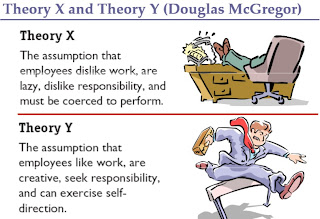Objective:
Today's objective is to understand the importance on
setting goals and the things we must keep in mind while setting ourselves SMART
goals.
"Success can't be a pleasant surprise,
It has to be Planned.
setting a SMART goal is the first step to it. "
Dr. Edwin Locke, who began goal setting research in
the 1960’s revealed an inductive relationship between goal
setting and improved production performance. Goal
setting involves the conscious process of establishing levels of performance in
order to obtain desirable outcomes. If individuals or teams find that their
current performance is not achieving desired goals, they typically become
motivated to increase effort or change their strategy.Setting a goal should include setting a structure
that directs actions and behaviors which improve the unsatisfactory
performance. Setting a goal serves us in the following ways:
- When an individual or team can focus attention on behaviors that will accomplish a goal, they also divert attention away from behaviors that will not achieve the goal.
- Goals energize people to expend more effort based upon the effort that is required to reach a certain goal.
- Goals also lead to a persistent pursuit of reaching the goal by providing a purpose for that pursuit.
How to set a Goal:
A smartly set goal leads to excellence. when you set a specific and measurable; challenging yet realistic goal for yourself and go for it with full devotion, its then you come face to face with the depth of potential. take some time out to watch this thrilling video.
now lets try to associate the video with the following characteristics that a goal must have.
i am quite sure that you must have related the
video with the five S.M.A.R.T. points which are mentioned in the above picture
in several ways. here is some supplement to it.
A goal must be specific and measurable. It should answer the who, what, when, where, why, and how of
the expectations of the goal. A goal to just jump higher is too general.
Instead, an example of a specific goal would be to improve high jump by
three inches.
They should be set high enough to encourage high
performance but low enough to be attainable. setting
goals that are too high not only jeopardizes motivation and commitment but also
can create a culture of corruption, dishonesty, and cutting corners.
The goal must be challenging, yet realistic. Lowering the bar for a high jumper
could not realistically increase motivation nor enhance performance. Similarly,
setting a goal to raise the bar ten feet is not a realistic or attainable goal
and would therefore not positively affect motivation or performance.
In order for goals to
positively affect motivation and performance, goals must be time-related. For the high jumper, he may set
a time within three months which may provide a realistic time frame to meet his goal. But again, time lines should be
arranged such that it will keep the goal challenging yet achievable.
 |
| the goal. |
So friends next time when you set a goal for yourself, be SMART about it. please keep reading for management GYAN and give your valuable feedback.




